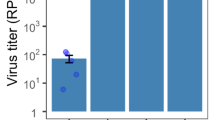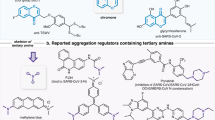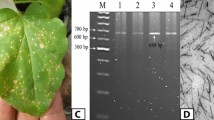Abstract
IT is difficult to obtain accurate information about the properties of viruses which lose their infectivity in vitro too quickly. Tomato spotted wilt virus is one of these, and investigations on it are further limited by the fact that it is inactivated at comparatively low temperatures (35° C). The in vitro life of tomato spotted wilt virus was reported by Bald and Samuel1 to be about four hours in undiluted expressed juice held at room temperature. Subsequent work by Best and Samuel2 and by Best3 showed that the factors causing inactivation were the pH value of the juice and a tyrosinase catalysed oxidation, and that by controlling the pH value and redox potential of the medium4 the virus could be maintained infective in solution for thirty-five days at 2° C.
This is a preview of subscription content, access via your institution
Access options
Subscribe to this journal
Receive 51 print issues and online access
$199.00 per year
only $3.90 per issue
Buy this article
- Purchase on SpringerLink
- Instant access to full article PDF
Prices may be subject to local taxes which are calculated during checkout
Similar content being viewed by others
References
Bald, J. G., and Samuel, G., Coun. Sci. Ind. Res. (Australia) Bull. 54 (1931).
Best, Rupert J., and Samuel, G., Ann. App. Biol., 23, 509 (1936).
Best, Rupert J., Aust. J. Exp. Biol. Med. Sci., 15, 191 (1937).
Best, Rupert J., Aust. J. Exp. Biol. Med. Sci., 17, 1 (1939); J. Aust. Inst. Agric. Sci., 5, 94 (1939).
Best, Rupert J., and Gallus, H. P. C., Aust. J. Sci. (in the press).
Author information
Authors and Affiliations
Rights and permissions
About this article
Cite this article
BEST, R., GALLUS, H. Preservation of the Virus of Tomato Spotted Wilt in Dried Plant Material. Nature 172, 315 (1953). https://doi.org/10.1038/172315a0
Issue date:
DOI: https://doi.org/10.1038/172315a0



